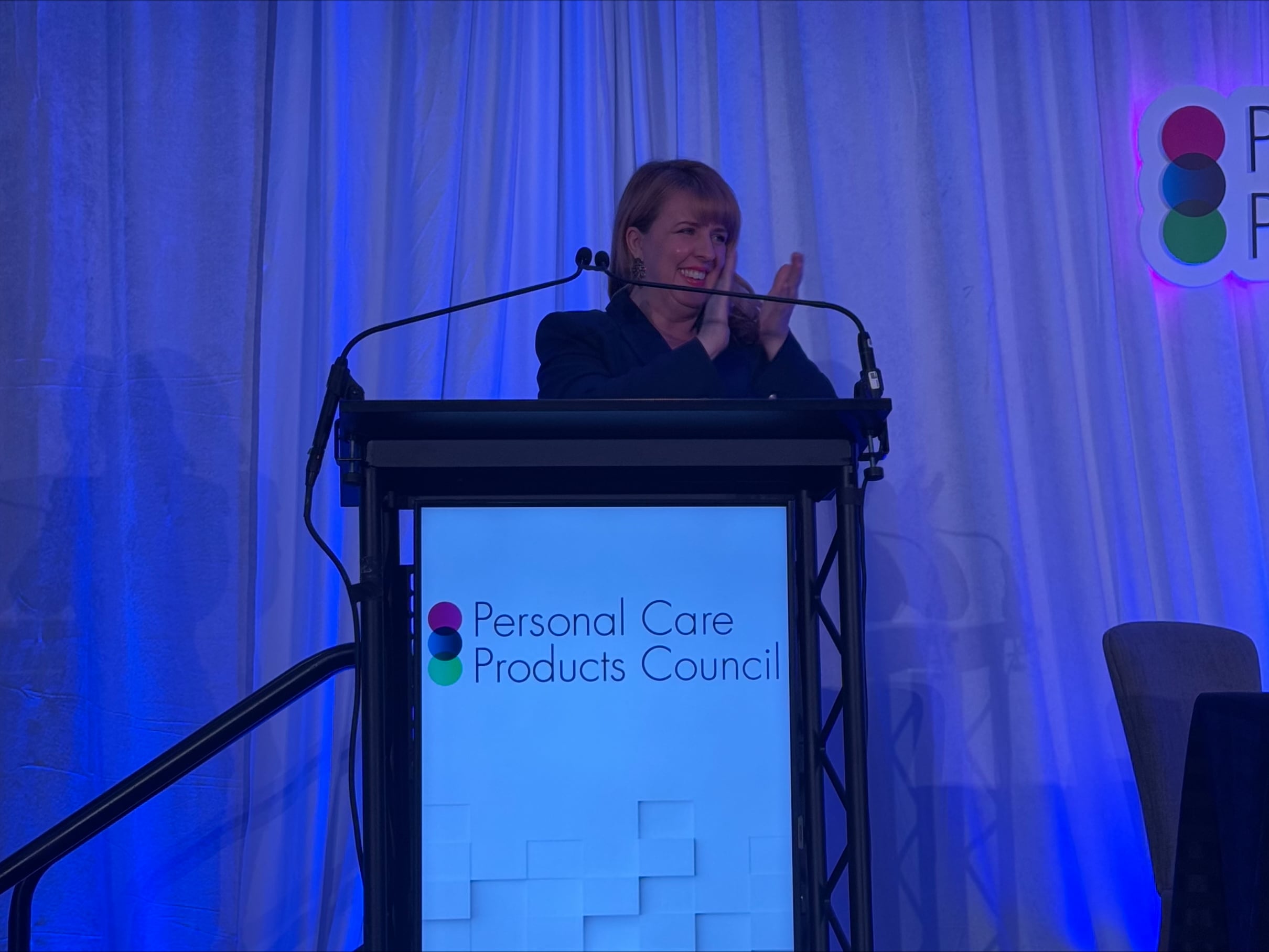On October 28-29, the Personal Care Products Council (PCPC) held its Science Symposium & Expo in Arlington, Virginia. The two-day conference featured speakers from the FDA, Colgate-Palmolive, Kenvue, Unilever, Procter & Gamble, and more, covering a wide variety of topics across microbiology, environmental science, ingredient safety, and product quality in the personal care product space.
Following the event, CosmeticsDesign spoke with Dr. Kimberly Norman, PCPC’s senior director of safety and regulatory toxicology, about her most compelling insights from the event’s discussions and presentations.
CDU: From your perspective, what were the biggest takeaways from this year’s Science Symposium that manufacturers and suppliers should be paying attention to as they plan for 2026?
Dr. Kimberly Norman: As we plan for 2026, manufacturers and suppliers are encouraged to focus on innovation, sustainability and strategic partnerships. Across the cosmetics and personal care products industry, our message is clear: the safety and quality of cosmetic products are paramount, and sustainability is a core expectation.
The symposium also showcased how digital tools are streamlining research and development, as well as enhancing consumer insights. Technologies like artificial intelligence (AI) and machine learning are revolutionizing product development, enabling faster and more sustainable innovation.
At the same time, collaboration among industry, academia and government continues to be crucial for navigating complex scientific and regulatory challenges.
CDU: Several sessions emphasized safety and microbiological control in manufacturing. What are some of the most persistent pain points you see in maintaining product quality and hygiene, and how is PCPC helping address them?
Dr. Kimberly Norman: There are several opportunities for refinement of product quality and hygiene maintenance. For example, in water system compliance, manufacturers face biofilm formation, routine microbiological testing and FDA audit readiness. During the symposium, experts provided practical strategies for system design, documentation and deviation management.
Attendees learned about hygienic failures in automated cleaning systems, particularly Clean-in-Place (CIP) and Clean-out-of-Place (COP) setups. These cleaning systems can harbor microbial contamination if poorly maintained; therefore, we had experts address common design flaws and discuss prevention techniques to mitigate these risks.
In addition to the symposium, PCPC continues to convene experts who share practical insights and regulatory expectations, while providing manufacturers with the tools needed to strengthen quality assurance and microbiological safety. As regulatory scrutiny intensifies, these learnings are essential for maintaining consumer trust and regulatory compliance.
CDU: Environmental risk assessment and ingredient sustainability were key themes again this year. What scientific or regulatory developments do you think will have the biggest impact on how formulators and ingredient suppliers operate moving forward?
Dr. Kimberly Norman: The advancement of Eco-NAMs (New Approach Methodologies) is revolutionizing environmental risk assessment in cosmetics by replacing traditional animal testing with more ethical, efficient and predictive tools. These methodologies enable faster and more transparent evaluations of ingredient safety and ecological impact.
Our sessions emphasized the importance of life cycle analysis and environmental fate modeling in evaluating the impact of ingredients. As science and technology evolve, our industry is embracing new tools and partnerships to advance product safety and environmental responsibility.
For example, advances from the Botanical Safety Consortium are reshaping how natural ingredients are assessed for safety and sustainability. AI-guided formulation tools are helping companies design compliant, eco-conscious products more efficiently. And global collaboration efforts are encouraging alignment with international environmental safety standards.
Together, these developments are driving a shift toward science-based sustainability and regulatory agility in the innovation of cosmetics and personal care products.
CDU: AI and data-driven innovation are becoming more visible in formulation and safety assessment. How ready is the industry to adopt these technologies responsibly, and where does PCPC see the greatest potential or concern?
Dr. Kimberly Norman: Innovation and collaboration are driving significant progress in cosmetic safety.
The potential of AI-driven innovation is undeniable. However, ensuring high-quality data is used for predictions, transparency and proper user training is imperative in realizing that potential. PCPC is encouraging responsible adoption by fostering cross-sector collaboration, sharing best practices and supporting ongoing dialogue with regulators.
As AI tools become more accessible, we continue to emphasize the importance of scientific rigor and regulatory compliance to maintain trust and safety. Moving forward, the industry must strike a balance between innovation and transparency, ensuring AI enhances formulation and safety science in a way that benefits consumers.
CDU: If you had to summarize the state of cosmetics science today, what message would you most want manufacturers, suppliers, and formulators to take away from this year’s symposium?
Dr. Kimberly Norman: Product safety and quality remain a top priority for the cosmetics and personal care products industry, and sustainability is no longer a compliance issue but a strategic imperative. Manufacturers are expected to integrate environmental science into product development, packaging and supply chain decisions.
Cosmetics science is undergoing an exciting transformation driven by sustainability, digital innovation and evolving regulatory demands. The industry is advancing non-animal testing methods and environmental risk assessments that meet both ethical and scientific standards.
At the same time, AI and data-driven tools are reshaping product formulation and safety evaluation, though responsible adoption remains a key concern. Microbiome research and ingredient traceability are also opening new frontiers in personalized care and product efficacy.
None of this happens in isolation, and the collaboration between industry, academia and regulators continues to strengthen the scientific foundation of product development.





